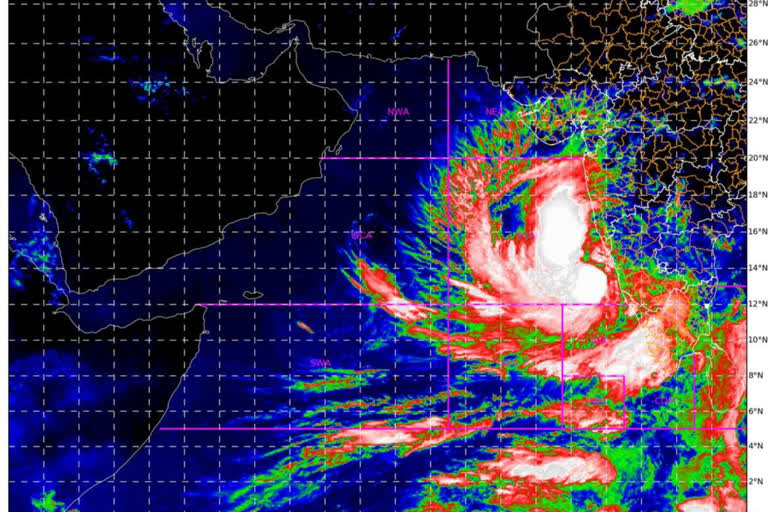Hyderabad:The peculiarity of the name Tauktae is garnering huge attention. The name Tauktae has been suggested by Myanmar which means a vocal lizard in the Burmese language.
When are cyclones named?
When the speed of a storm wind reaches or crosses 74 mph then it is considered to be a Cyclone, hurricane, or typhoon. Only when a storm becomes a Cyclone it is given a name.
How are they named?
The India Meteorological Department (IMD) recently released a list of 169 names of future tropical cyclones that would emerge in the Bay of Bengal and the Arabian Sea.
Cyclones that form in every ocean basin across the world are named by the regional specialised meteorological centres (RSMCs) and Tropical Cyclone Warning Centres (TCWCs). There are six RSMCs in the world, including the India Meteorological Department (IMD), and five TCWCs.
Also read:Cyclone Tauktae gets its name from a gecko
As an RSMC, the IMD names the cyclones developing over the north Indian Ocean, including the Bay of Bengal and Arabian Sea, after following a standard procedure. The IMD is also mandated to issue advisories to 12 other countries in the region on the development of cyclones and storms.
History of naming cyclones
The history of naming hurricanes dates back to the early 19th century with people naming storms after the places they hit, names of the saints on whose day the hurricane occurred, or simply the year of their occurrence.
The practice of naming tropical cyclones is said to be initiated by well-known meteorologist Clement Wragge during the late 19th century.
In the beginning, storms were named arbitrarily. For instance, a storm over the Atlantic in 1842 was known as Antje's hurricane because it ripped off the mast of a boat named Antje.
During the mid 20th century, western meteorologists started naming cyclones using some common women names for ease of identifying when there are multiple systems over a particular ocean basin.
Fortunately, this seemingly gender-biased system came to an end by 2000 after several protests. In 1997, Hong Kong proposed using local names for regional cyclones rather than using the European and American names.
In 2000, the World Meteorological Organisation (WMO) agreed to start assigning names for cyclones over the North Indian Ocean using a list of names suggested by the countries surrounding the ocean basin.
Initially, India expressed reservations to naming cyclones and after four years of continuous deliberations, the India Meteorological Department (IMD) named the first tropical cyclone as Onil in September 2004.
Process of naming
There are six regional specialised meteorological centres (RSMCs) and five regional Tropical Cyclone Warning Centres (TCWCs) across the globe to monitor cyclogenesis, issue advisories and name cyclones.
